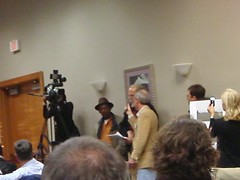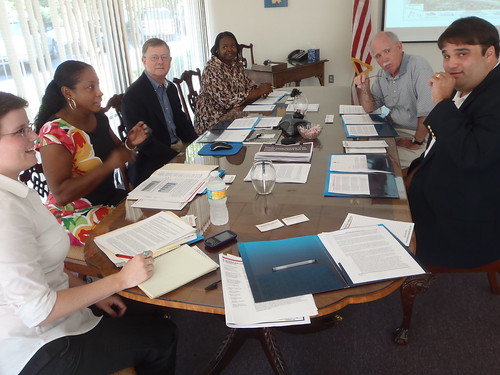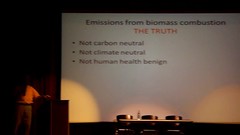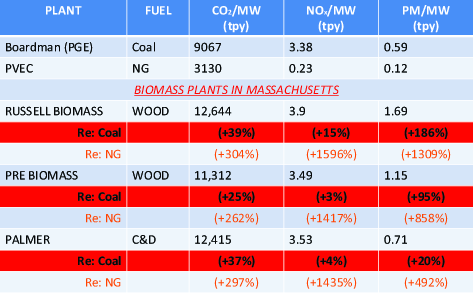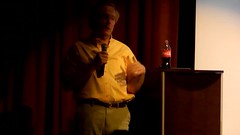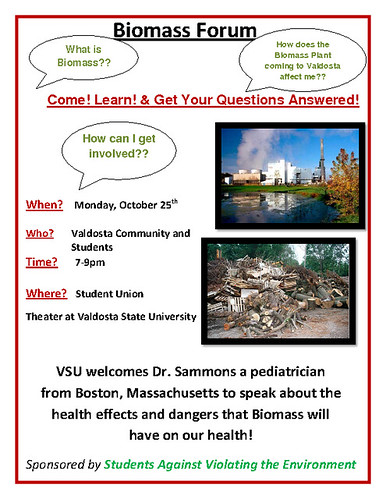
According to the
VDT’s What We Think of yesterday:
All citizens of Lowndes County and any other interested parties are
encouraged to attend the Biomass Forum Monday night, hosted by the
Valdosta-Lowndes County Industrial Authority, at 7:30 at the Conference
Center.
Forum? As in people will get time to get real questions answered?
And the VLCIA might be interested in real input?
The authority has invited a half-dozen individuals to speak, which will
last approximately 60 to 90 minutes, followed by “ample” time for
questions to be answered, at least 30 minutes, according to the Authority.
Hm, 3 to 1 they speak we listen.
Interesting definition of “forum”.
Also, despite VLCIA’s many complaints that people didn’t get involved
early enough in their previous public meetings about this plant,
if this event is listed on VLCIA’s own website, I can’t find it.
It’s not on the VLCIA’s facebook page, either.
Although on November 10th there are two VLCIA facebook posts saying:
The Industrial Authority stands behind its decision for the construction
of Wiregrass Power LLC and feels like this green project will be a
win/win for the community.
So much for looking for input.
Anyway, back to the VDT:
The Times has presented several stories with facts concerning the $140
million project, which will generate 20 to 25 local jobs once the plant
is up and running.
20 to 25 local jobs.
Meanwhile, in other places that have a plan:

What’s our plan, VLCIA?
How about we plant trees instead of burn them?
And I agree with the VDT on this:
And to the Industrial Authority and invited speakers, you are urged to
not insult the intelligence of those attending. They understand what
the plant will do. What they want to know is how this will affect them
in terms of health issues, air quality and safety, burning sewage,
the number of trucks on the highway so close to several schools, etc.
The onus is on you, the Authority, to handle this in a much more
professional manner than the last Sterling project.
More to the point, why is the VLCIA wasting its political capital
(and our tax dollars)
on this one polluting plant when it could be working to bring in
real clean energy?
Does the VLCIA have a plan to raise the local metro area out of
the bottom 10 for wages?
Or is this 20-25-job polluting plant the best the VLCIA can do?
If you can’t come to tonight’s “forum”, or even if you can,
here is
contact information for your elected and appointed officials,
including the VLCIA board.
-jsq
 Here are videos that illustrate the VDT’s point today in
What We Think:
Here are videos that illustrate the VDT’s point today in
What We Think:
